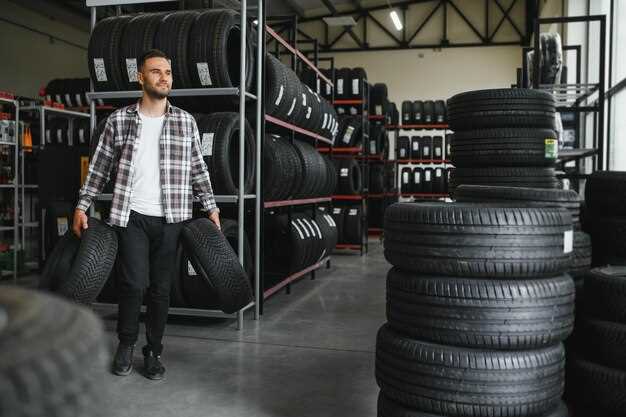
When it comes to track days, the choice of tires can significantly enhance your sports car’s performance on the circuit. Selecting the right set of tires is crucial for maximizing grip, improving handling, and ensuring safety during high-speed runs. With numerous tire options available, understanding how different compounds and designs affect performance is essential for any serious track day enthusiast.
Sports tires are engineered to deliver peak performance by providing superior traction and responsiveness. They are typically made from softer rubber compounds, allowing for better adhesion on asphalt, which translates to increased cornering speeds and faster lap times. However, these advantages come at the cost of durability, making it vital to choose tires tailored for track use rather than daily driving conditions.
In this article, we will delve into the essential factors to consider when selecting track day tires. From understanding tire classifications to exploring the impacts of weather and track conditions, our guide aims to equip you with the knowledge needed to make informed choices. By aligning your tire selection with your car’s capabilities and your driving style, you can optimize your performance and enjoyment on the track.
Understanding Tire Compounds for Track Conditions

When selecting the right tires for track days, understanding the various tire compounds available is essential for maximizing performance in sports car applications. Tire compounds significantly influence grip, wear rate, and temperature tolerance, which directly affect your vehicle’s handling and speed on the track.
There are generally three main categories of tire compounds: soft, medium, and hard. Soft compounds offer higher levels of grip due to their increased flexibility. This flexibility allows the tire to conform better to the track surface, resulting in enhanced traction, especially in corners. However, soft tires tend to wear out more quickly, making them less suitable for longer sessions.
Medium compounds strike a balance between grip and durability. They provide adequate traction while offering a longer lifespan than soft compounds. This makes them a popular choice for track enthusiasts who participate in multiple sessions throughout the day without wanting to constantly change tires.
Hard compounds are designed for durability and extended use. While they lack the ultimate grip offered by softer options, hard tires excel in longevity and are ideal for less aggressive driving styles or tracks that are less demanding in terms of grip. They also perform well in changing weather conditions, providing consistent handling characteristics.
The selection of tire compounds should also consider track conditions such as temperature, surface texture, and expected weather. Warmer track temperatures often enhance grip for softer compounds, while colder conditions may favor medium or hard options to prevent excessive tire wear. Understanding these dynamics will enable drivers to make informed choices that align with their driving style and track requirements.
In summary, the choice of tire compound plays a critical role in track performance for sports cars. By carefully assessing the types of compounds available and relating them to the specific conditions of the track, drivers can optimize their setup for the best possible performance on the day of their event.
Evaluating Tire Sizes for Your Sports Car
When it comes to enhancing the performance of your sports car during track days, selecting the right tire size is crucial. Tire size influences several aspects of vehicle dynamics, including grip, handling, and overall performance on the track.
Start by consulting your car’s manufacturer specifications for recommended tire sizes. Sports cars often have performance-oriented dimensions that strike a balance between grip and ride comfort. For instance, lower profile tires (wider and shorter sidewalls) improve steering response and cornering capability, which is essential for track use.
Choosing Width: Wider tires provide a larger contact patch with the track surface, enhancing grip. However, they may also increase rolling resistance, potentially slowing acceleration. Additionally, consider the track surface; if it’s a high-grip asphalt, slightly narrower tires may still offer excellent performance while reducing drag.
Aspect Ratio Considerations: The aspect ratio indicates the tire’s height relative to its width. A lower aspect ratio (for example, 40 vs. 55) typically improves cornering stability and responsiveness. However, a too-low aspect ratio can compromise comfort on uneven surfaces. Finding the right balance based on your driving style and track conditions is key.
Diameter Matters: Tire diameter affects the overall gearing of the car. A larger diameter may enhance top speed but can also result in slower acceleration. It’s important to maintain compatibility with your vehicle’s suspension and wheel well to avoid rub and performance issues.
Before finalizing your tire choice, consider the tire’s construction and compound, as these factors also significantly influence performance. Track-specific tires often utilize softer compounds for increased grip, but they may wear out faster than street-oriented options.
Ultimately, evaluating tire sizes for your sports car requires careful consideration of multiple factors, from manufacturer specifications to your specific track conditions and driving style. Investing time in this decision will result in improved performance, handling, and an exhilarating experience on the track.
Maintenance Tips for Prolonging Track Tire Lifespan

Proper maintenance is crucial for maximizing the lifespan of your track tires. These tires are designed for high performance on the track, and by following a few key practices, you can ensure they last longer while maintaining optimal performance.
1. Regular Inspection
Frequent tire inspections can help you identify any wear and tear early on. Check for signs of uneven wear, cracks, or punctures. Inspect the tread depth as well; a minimum tread depth can impact performance drastically on a track.
2. Maintain Proper Tire Pressure
Always check and adjust the tire pressure before hitting the track. Adequate pressure is essential for optimal grip and handling. Under-inflated tires can lead to excessive wear and overheating, while over-inflation can reduce traction.
3. Heat Cycles Management
Track tires are designed to perform best within certain temperature ranges. After a session, allow the tires to cool down properly to avoid excessive heat cycles, which can degrade the rubber compounds. Proper cooling helps maintain the tire’s integrity and performance features.
4. Avoid Dragging Brakes
Minimize brake drag when not on the track. Dragging brakes increases the temperature of both the brakes and tires, leading to premature wear. Make sure to allow tires to cool between sessions and avoid excessive braking before entering corners.
5. Rotate Tires
Regularly rotating your track tires can help distribute wear evenly across the set. This practice can lead to a more balanced performance and extended lifespan. Follow the manufacturer’s guidelines for the best rotation practices.
6. Store Correctly
If you’re not using your track tires for an extended period, store them in a cool, dry place away from direct sunlight. Avoid stacking tires on top of one another to prevent deformation. Consider using tire bags that limit exposure to air and ozone.
7. Choose the Right Tires for Conditions
Select tires that are specifically designed for the conditions you’ll be tracking in. Different weather and surface types require different tire compositions for optimal performance. The right tire choice helps minimize excessive wear.
By incorporating these maintenance tips into your routines, you can enhance the lifespan of your track tires significantly. Not only will well-maintained tires perform better on the track, but they will also save you money in the long run.


